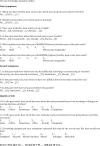Development of a clinically relevant symptom index to assess patients with chronic orchialgia/chronic scrotal content pain
- PMID: 29928613
- PMCID: PMC5989111
- DOI: 10.21037/tau.2018.04.10
Development of a clinically relevant symptom index to assess patients with chronic orchialgia/chronic scrotal content pain
Abstract
Background: The purpose of this study was to develop a candidate symptom index for men with an established diagnosis of chronic orchialgia.
Methods: Based on interviews with patients and providers, we developed a 70-item questionnaire that focused on seven areas of orchialgia symptoms: pain, location, urinary symptoms, sexual dysfunction, medical history and quality of life (QOL) impact. The questionnaire was completed by patients at two medical centers. Cluster analysis was performed with the software package R (3.2.1).
Results: A total of 113 men completed the survey. Median symptom duration was 12 months (range, 3-336 months). Outside the testicle, pain was felt in the spermatic cord (66%), groin (66%), penis (24%), suprapubic region (38%), flank (31%), thigh (32%), abdomen (36%) and perineum (35%). Bother scores were high only for testicle and spermatic cord pain. Urinary frequency was common (54%) but not bothersome. Sexual dysfunction was common: 55% had erectile dysfunction, 56% had decreased libido and 39% had painful ejaculation with high bother for all. By cluster analysis, QOL parameters clustered tightly with minimal pain level, pain at night, burning pain, distribution to spermatic cord and groin, erectile dysfunction and premature ejaculation.
Conclusions: Men with chronic orchialgia have a high incidence of associated symptoms. Most bothersome symptoms with highest QOL impact include burning pain, pain at night, radiation to groin and spermatic cord, erectile dysfunction and low libido. Based on these findings, we have created a candidate orchialgia symptom index with domains of pain, sexual symptoms and QOL that will undergo prospective validation.
Keywords: Orchialgia; chronic pain; chronic scrotal content pain; testicular diseases; testicular pain.
Conflict of interest statement
Conflicts of Interest: The authors have no conflicts of interest to declare.
Figures
Similar articles
-
Validation of the Chronic Orchialgia Symptom Index for Men With Chronic Orchialgia/Chronic Scrotal Contents Pain.Urology. 2018 Sep;119:39-43. doi: 10.1016/j.urology.2018.05.030. Epub 2018 Jun 10. Urology. 2018. PMID: 29898380
-
Targeted Robotic Assisted Microsurgical Denervation of the Spermatic Cord for the Treatment of Chronic Orchialgia or Groin Pain: A Single Center, Large Series Review.J Urol. 2018 Apr;199(4):1015-1022. doi: 10.1016/j.juro.2017.10.030. Epub 2017 Oct 25. J Urol. 2018. PMID: 29079446
-
Chronic scrotal pain may lead to reduced sexual function and interest, while sexual activity may worsen chronic scrotal pain: "double jeopardy".Transl Androl Urol. 2018 Mar;7(Suppl 1):S23-S28. doi: 10.21037/tau.2017.12.06. Transl Androl Urol. 2018. PMID: 29644167 Free PMC article.
-
A simplified treatment algorithm for chronic scrotal content pain syndrome.Curr Urol. 2024 Dec;18(4):251-256. doi: 10.1097/CU9.0000000000000240. Epub 2024 Apr 11. Curr Urol. 2024. PMID: 40256293 Free PMC article. Review.
-
Chronic orchialgia: Review of treatments old and new.Indian J Urol. 2016 Jan-Mar;32(1):21-6. doi: 10.4103/0970-1591.173110. Indian J Urol. 2016. PMID: 26941490 Free PMC article. Review.
Cited by
-
Contemporary approaches and treatment perspectives for chronic scrotal content pain: insights from a national practice patterns survey of reproductive urologists.Int J Impot Res. 2025 Jun 4. doi: 10.1038/s41443-025-01101-x. Online ahead of print. Int J Impot Res. 2025. PMID: 40467868
-
Successful Resolution of Chronic Testicular Pain With an Impairment-Based Treatment Program: A Case Study With One-Year Follow-Up.Cureus. 2021 Mar 12;13(3):e13850. doi: 10.7759/cureus.13850. Cureus. 2021. PMID: 33859901 Free PMC article.
-
Management of Chronic Orchialgia: Challenges and Solutions - The Current Standard of Care.Res Rep Urol. 2020 Jul 2;12:199-210. doi: 10.2147/RRU.S198785. eCollection 2020. Res Rep Urol. 2020. PMID: 32754451 Free PMC article. Review.
-
Gold Standard Care of Chronic Scrotal Pain.Res Rep Urol. 2021 May 24;13:283-288. doi: 10.2147/RRU.S278803. eCollection 2021. Res Rep Urol. 2021. PMID: 34079773 Free PMC article. Review.
-
Chronic scrotal content pain: the experiences of patients undergoing microsurgical spermatic cord denervation.Ther Adv Urol. 2023 Sep 25;15:17562872231196685. doi: 10.1177/17562872231196685. eCollection 2023 Jan-Dec. Ther Adv Urol. 2023. PMID: 37767052 Free PMC article.
References
LinkOut - more resources
Full Text Sources
Other Literature Sources


